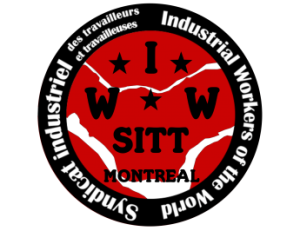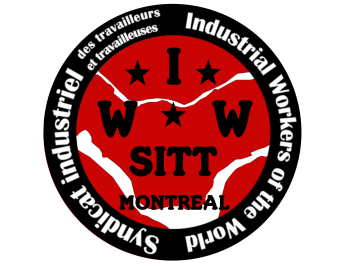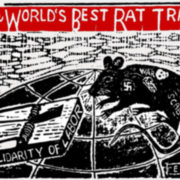The origins of the Solidarity Unionism. First part: a Bibliography
The Solidarity trade union movement is a term that was mainly led by Alice Lynd Staughon, inspired by the organizational model of the first campaigns of the IWW happened to get gains without legal bargaining unit or even without being recognized by the employer (collective agreements are not legally binding in the United States since the signing of the National Labor Relations Act in 1935, the Canadian equivalent could be the application of the Rand formula dating 1946). If the principle was also inspired by the work of Martin Glaberman, C.L.R. James et Stan Weird, the use of the Solidarity Unionism as understood today SITT-IWW appears for the first time in June 2002 in an article in The Nation magazine called Open Source Unionism: A proposal to American Labor, Joel Rogers and Richard B. Freeman.
The idea was then developed largely by the efforts of Alexis Buss, who served as General Secretary-Treasurer of the Industrial Union of Workers (SITT-IWW) from 2000 at 2005. It is in giving him the name of minority unionism, he explained the concept in a column published by the industrial worker called Minority Report.
- Minority Report #1 – Industrial Worker, July 2002
- Minority Report #2 – Industrial Worker, October 2002
- Minority Report #3 – Industrial Worker, November 2002
- Minority Report #4 – Industrial Worker, December 2002
- Minority Report #5 – Industrial Worker, June 2003
Francophone literature is still thin on the subject, but for those of you with the chance to understand English, various books published, inter alia, by Charles H. Kerr Company and Labor Notes are still considered key works. The Headquarters of the ISTC-IWW listed in 9 among the most important:
- Punching Out & Other Writings – Martin Glaberman; edited by Staughton Lynd; Charles Kerr, 2002. 250 pages.
- The New Rank & File -Édité par Staughton Lynd and Alice Lynd, ilr Press, © 2000. 288 pages.
- Solidarity Unionism: Rebuilding the Labor Movement from Below – Staughton Lynd; Charles Kerr, 1993. 128 pages.
- Democracy is Power: Rebuilding Unions from the Bottom Up – Mike Parker et Martha Gruelle, Labor Notes, © 1999. 262 pages.
- Class War Lessons; From Direct Action on the Job to the ’46 Oakland General Strike (Unions With Leaders Who Stay on the Job) – Stan Weir; Insane Dialectical Editions, 2006. 48 pages.
- Singlejack Solidarity – Stan Weir; University of Minnesota, © 2004. 408 pages.
- A Troublemaker’s Handbook, How to Fight Back Where You Work–And Win! – Edited by Dan LaBotz, Labor Notes, 1991. 262 pages.
- A Troublemaker’s Handbook 2, How To Fight Back Where You Work and Win! — Edited by Jane Slaughter, Labor Notes, 2004. 372 pages.
- The Politics of Nonviolent Action – Gene Sharp, by Gene Sharp, Porter Sarg. © 1973. 913 pages.









Leave a Reply
Want to join the discussion?Feel free to contribute!